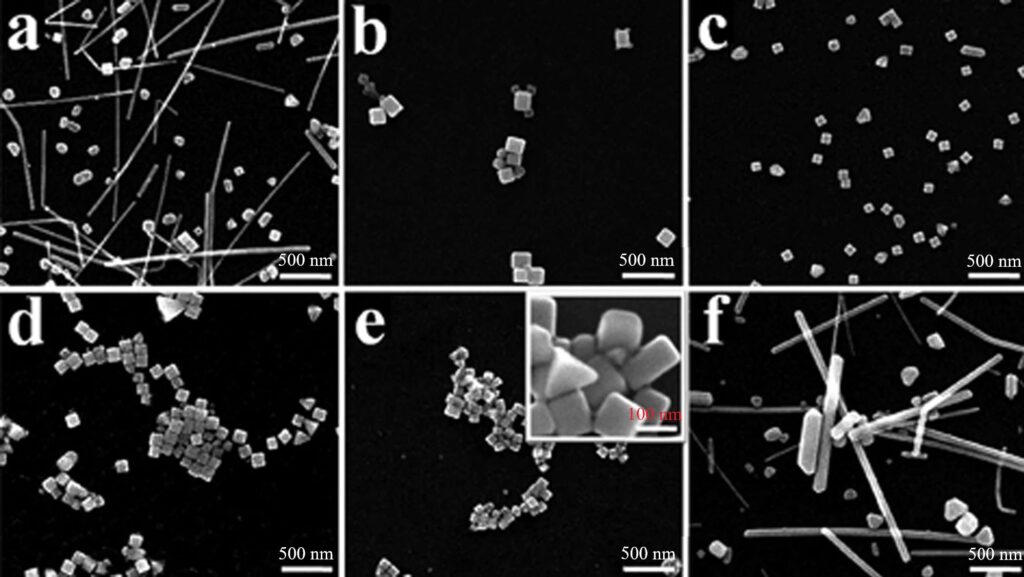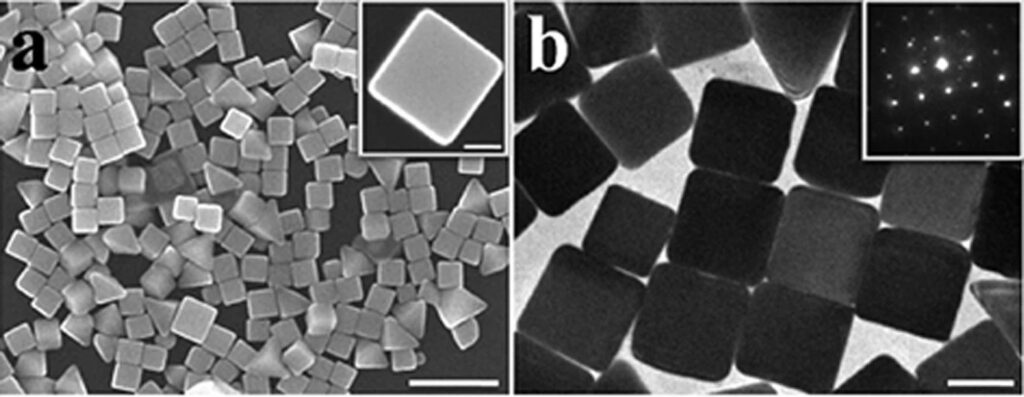Table of Contents
Using Cube Roots to Measure Nanoparticle Size
Introduction
In your math class, you’ve learned about raising numbers to the power of three (\( x^3 \)) and its inverse operation – the cube root: \[\sqrt[3]{x}\] Have you ever wondered why we learn about cube roots and where they find practical applications?
One common example often used to illustrate the application of cube roots is finding the side length of a cube when its volume is known. While this is a valid example, it might seem disconnected from real-world situations. But where can we realistically encounter a scenario where we know the volume of an object like a cube but can’t measure its side length using a ruler? The answer lies in nanotechnology! Let’s explore how cube roots come into play in this field.
Nanotechnology and Nanotechnology Engineering
Nanotechnology engineers specialize in designing and constructing objects that are smaller than 100 nanometers (<100 nm). When particles reach such minuscule sizes, known as nanoparticles, they often exhibit unique physical and chemical properties. This opens up possibilities for creating very strong yet lightweight materials, developing novel pharmaceuticals, engineering various protective coatings, making miniature electronic devices, robust fire-resistant materials, and much more.
Nanoparticles can take on various shapes such as cylinders, pyramids, spheres, and cubes, all scaled down to just a few nanometers. The image below offers an illustration of how these particles might appear if visible to the naked eye.

Achieving precise control over the properties of nanoparticles frequently requires measuring their sizes. But how can this be accomplished when the particles are so small? This is where the calculation of cube roots becomes important!
Determining the Size of a Cube-Shaped Nanoparticle Using Cube Roots
Let’s consider a scenario where we have a cube-shaped nanoparticle (as shown in the image below), and we need to determine its size.

Unfortunately, we can’t simply measure its dimensions with a ruler. However, what if we were able to find the volume of the nanoparticle? In that case, we could calculate its size by finding the cube root. Fortunately, there is a method to do just that.
Revisiting Physics: Determining the Volume of the Nanoparticle
In your physics classes, you’ve likely encountered the following formula:
\[ V = \frac{m}{\rho} \qquad (1) \]
This equation illustrates the relationship between volume, mass, and density. When working with nanoparticles in nanotechnology, engineers typically have knowledge of the material comprising the nanoparticle (such as aluminum or certain polymers), so the material’s density, ρ, is usually known.
Additionally, nanotechnology offers a method for measuring the mass of particles known as mass spectroscopy. (We won’t get into all the details of this method here, if you’re curious, you can check out a cool video on Khan Academy.) Mass spectroscopy enables the measurement of the mass of very small particles, including nanoparticles.
Given that we can measure the mass and know the density of the material, we can now calculate the volume of the nanoparticle. Let’s illustrate this with a real-life example.
Example
Let’s say we’re dealing with a polymer nanoparticle. The formula (1) for polymers goes like this:
\[ V = 0.001661 \times \frac{M_w}{\rho} \qquad (2) \]
Here, 0.001661 is a special factor used for polymers. \( M_w \) represents the Molecular weight (measured in g/mol), which in our case could be 100,000 g/mol. We also know the density of our polymer material: 1.05 g/cm³. Plugging in these values into formula (2) yields:
\[ V = 0.001661 \times \frac{100,000}{1.05} \]
So, we get:
\[ V = 158.19 \, \text{nm}^3 \]
This means we have a cube with a volume of 158.19 cubic nanometers. And now, here’s where the cube root finally kicks in! Remember, our nanoparticle has a cube shape, right? So, if the volume of the cube is 158.19 nm³, then applying the cube root gives us:
\[ \sqrt[3]{158.19} \approx 5.408 \, \text{nm} \]
Hence, the side of our nanoparticle is approximately 5.408 nanometers.
Conclusion
In conclusion, you’ve witnessed how a straightforward mathematical operation, shifting from cube power to cube root, enabled us to determine the size of the nanoparticle without physically measuring it. Moreover, this example illustrates how math, physics, and chemistry are tightly interconnected in nanotechnology, especially when investigating the properties of nanoparticles. This shows the beauty and power of math and science—you can measure invisible properties, such as size, of objects and materials simply by understanding their other characteristics, like mass and density.
Classroom version: Engage your students with real-world examples
If you want to share these examples with your students in math class, we have a full version of the video available. This video explains the examples in just a few minutes and helps students connect what they learn in school with real-world applications. It also shows them how math is used in various jobs.
Video preview:
You can access this and other full videos by subscribing.
References
To ensure the accuracy of the methods, formulas, and numerical values presented in this article, we referred to the following source:
This book served as a valuable resource in the preparation of this article.
The images of Ag nanoparticles are sourced from the following publication:
These images are available under an Open Access license distributed under the Creative Commons Attribution 4.0 International License.
